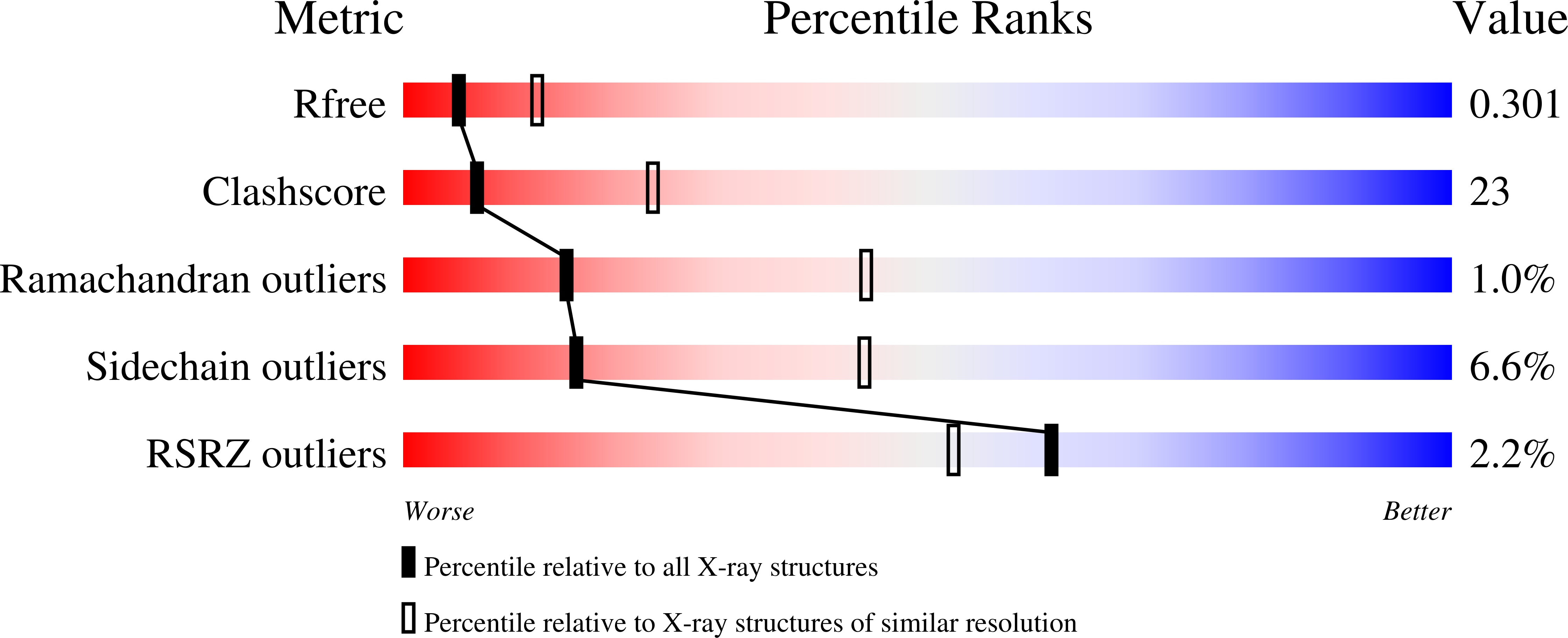Evidence for the "dock, lock, and latch" ligand binding mechanism of the staphylococcal microbial surface component recognizing adhesive matrix molecules (MSCRAMM) SdrG.
Bowden, M.G., Heuck, A.P., Ponnuraj, K., Kolosova, E., Choe, D., Gurusiddappa, S., Narayana, S.V., Johnson, A.E., Hook, M.(2008) J Biol Chem 283: 638-647
- PubMed: 17991749
- DOI: https://doi.org/10.1074/jbc.M706252200
- Primary Citation of Related Structures:
2RAL - PubMed Abstract:
Staphylococcus epidermidis is an opportunistic pathogen and a major cause of foreign body infections. The S. epidermidis fibrinogen (Fg)-binding adhesin SdrG is necessary and sufficient for the attachment of this pathogen to Fg-coated materials. Based largely on structural analyses of the ligand binding domain of SdrG as an apo-protein and in complex with a Fg-like peptide, we proposed that SdrG follows a "dock, lock, and latch" mechanism to bind to Fg. This binding mechanism involves the docking of the ligand in a pocket formed between two SdrG subdomains followed by the movement of a C-terminal extension of one subdomain to cover the ligand and to insert and complement a beta-sheet in a neighboring subdomain. These proposed events result in a greatly stabilized closed conformation of the MSCRAMM-ligand complex. In this report, we describe a biochemical analysis of the proposed conformational changes that SdrG undergoes upon binding to its ligand. We have introduced disulfide bonds into SdrG to stabilize the open and closed forms of the apo-form of the MSCRAMM. We show that the stabilized closed form does not bind to the ligand and that binding can be restored in the presence of reducing agents such as dithiothreitol. We have also used Förster resonance energy transfer to dynamically show the conformational changes of SdrG upon binding to its ligand. Finally, we have used isothermic calorimetry to determine that hydrophobic interactions between the ligand and the protein are responsible for re-directing the C-terminal extension of the second subdomain required for triggering the beta-strand complementation event.
Organizational Affiliation:
Center for Extracellular Matrix Biology, Institute of Biosciences and Technology, Texas A&M University System Health Science Center, Houston, Texas 77030. Electronic address: gbowden@ibt.tamhsc.edu.














